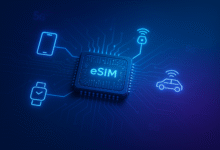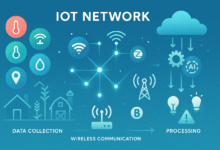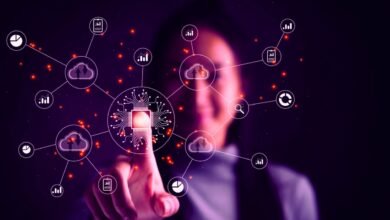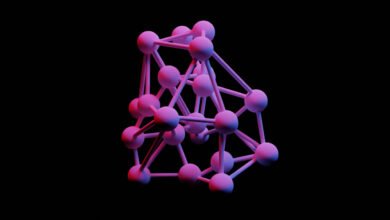IoT in Mental Health: Can Connected Devices Support Emotional Well-Being?
Discover how IoT devices and wearable technology are revolutionizing mental healthcare through real-time monitoring, stress detection, and personalized digital therapeutics.
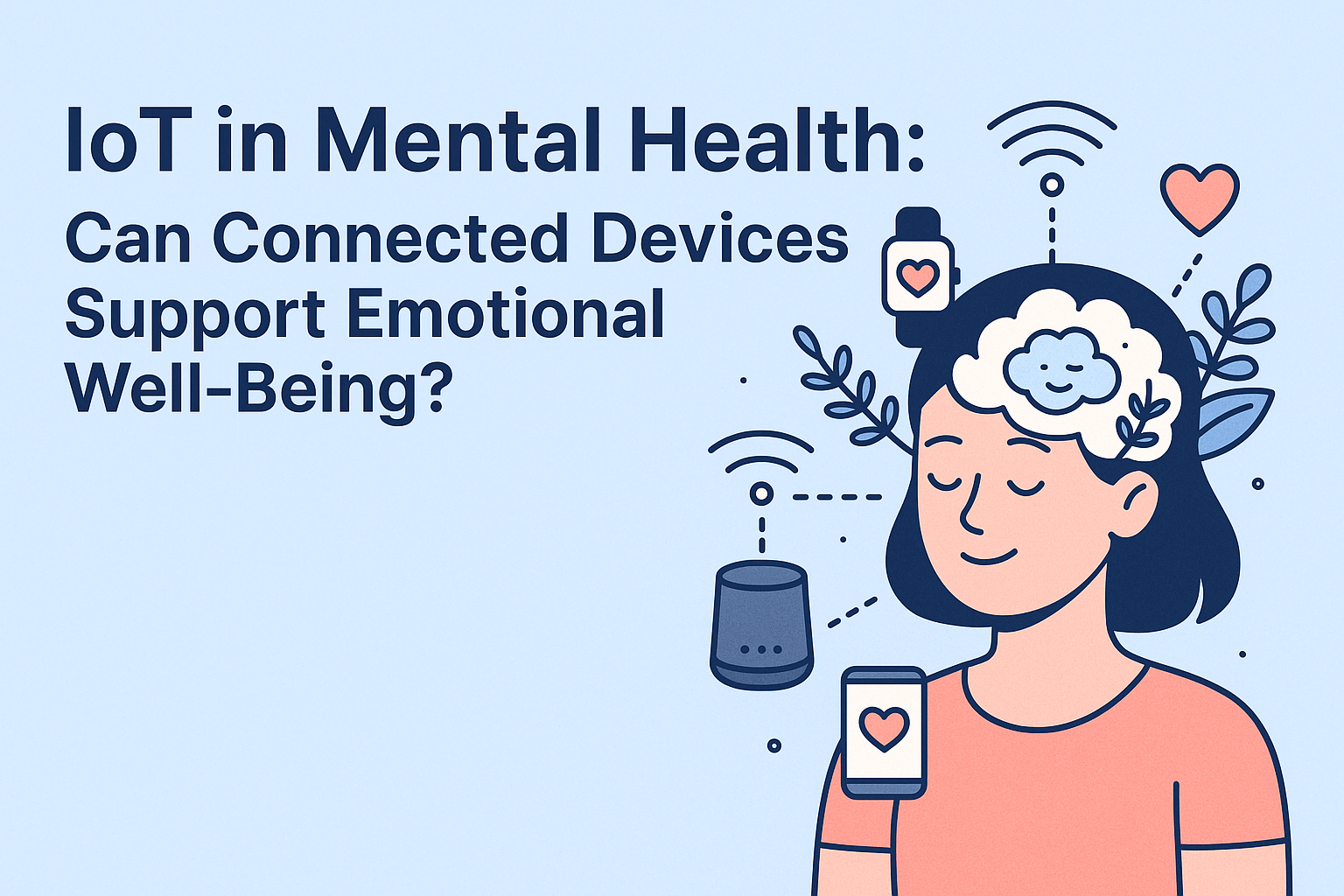
The intersection of technology and mental healthcare is creating unprecedented opportunities for emotional wellness monitoring and support. IoT mental health solutions are transforming how we understand, track, and manage psychological wellbeing through connected devices that operate seamlessly in our daily lives. From wearable mental health monitoring devices that detect stress patterns to smart sensors that track sleep and mood fluctuations, the Internet of Things is opening new pathways for proactive mental health management.
Mental health disorders affect over 500 million people globally, with depression, anxiety, and stress-related conditions becoming increasingly prevalent. Traditional mental healthcare often relies on periodic check-ins and self-reported symptoms, leaving significant gaps in understanding a person’s day-to-day emotional state. Connected devices for emotional wellbeing are bridging this gap by providing continuous, objective data that can help both individuals and healthcare providers make more informed decisions about mental health treatment and intervention strategies.
This technological revolution in mental healthcare represents more than just gadgets and data collection. It’s about creating personalized, accessible, and proactive approaches to emotional wellness that can detect early warning signs, provide real-time interventions, and support long-term mental health management in ways previously impossible.
Understanding IoT Applications in Mental Healthcare
Real-Time Physiological Monitoring
IoT devices for mental health excel at capturing physiological markers that correlate with emotional states. Heart rate variability, skin conductance, sleep patterns, and activity levels all provide valuable insights into a person’s psychological wellbeing. Research published in peer-reviewed journals demonstrates that wearable technology for anxiety and depression can achieve up to 87% accuracy in identifying emotional events through continuous monitoring.
Smart health devices equipped with electrodermal activity sensors can detect stress responses in real-time, allowing for immediate interventions when anxiety levels spike. These devices measure the skin’s electrical conductance, which changes with sweat gland activity triggered by emotional arousal. Studies show that combining multiple physiological markers through connected wellness devices provides a more comprehensive picture of mental health status than any single measurement.
Behavioral Pattern Recognition
Beyond physiological monitoring, IoT emotional wellness solutions track behavioral indicators that signal changes in mental health. Sleep quality, physical activity levels, social interaction patterns, and even smartphone usage can reveal emerging mental health concerns. Machine learning algorithms analyze these patterns to identify deviations from baseline behavior that might indicate depression, anxiety, or other psychological conditions.
Digital mental health solutions powered by IoT technology can detect subtle changes in daily routines that humans might miss. For example, gradual decreases in physical activity, irregular sleep patterns, or reduced social engagement can all be early indicators of developing mental health issues. This passive monitoring approach reduces the burden on individuals while providing healthcare providers with objective data for assessment and treatment planning.
Current Wearable Technologies for Mental Health
Commercial Fitness Trackers and Smartwatches
Leading wearable mental health monitoring devices have evolved beyond basic fitness tracking to include sophisticated stress management features. Popular devices like Fitbit, Apple Watch, and Garmin now incorporate stress detection algorithms that analyze heart rate variability to provide users with real-time stress levels and guided breathing exercises.
These mainstream smart devices for stress detection represent the democratization of mental health monitoring technology. Features like sleep score tracking, activity reminders, and mindfulness prompts are making mental wellness tools accessible to millions of users worldwide. The integration of stress management features into everyday wearables normalizes mental health monitoring and reduces stigma associated with seeking help.
Specialized Mental Health Wearables
Beyond commercial fitness trackers, specialized emotion-sensing devices are designed specifically for mental health applications. Companies like Feel Therapeutics have developed proprietary wearable devices that combine multiple sensors to provide continuous emotional state monitoring with clinical-grade accuracy.
These dedicated digital therapeutics devices often incorporate advanced features like:
- Continuous electrodermal activity monitoring
- Multi-parameter stress detection algorithms
- Personalized intervention recommendations
- Integration with telehealth platforms
- Clinical-grade data collection for healthcare providers
Research indicates that users of specialized mental health wearables experience significant improvements in anxiety and depression symptoms, with some studies reporting over 50% reduction in depressive symptoms and 24% improvement in life satisfaction metrics.
Remote Patient Monitoring and Telehealth Integration
24/7 Mental Health Support
Remote patient monitoring for mental health represents a paradigm shift from reactive to proactive care. IoT healthcare applications enable continuous monitoring of mental health indicators, allowing healthcare providers to intervene before crises occur. This approach is particularly valuable for individuals with bipolar disorder, severe depression, or anxiety disorders who benefit from consistent monitoring.
The integration of connected devices for emotional wellbeing with telehealth platforms creates comprehensive care ecosystems. Patients can receive personalized recommendations, medication reminders, and crisis interventions based on real-time data from their wearable devices. Healthcare providers gain unprecedented visibility into their patients’ daily mental health patterns, enabling more informed treatment decisions.
Data-Driven Treatment Personalization
Smart sensors for psychological wellbeing generate vast amounts of data that can inform personalized treatment approaches. Machine learning algorithms analyze individual patterns to identify optimal intervention timing, effective coping strategies, and treatment response indicators. This data-driven approach moves mental healthcare away from one-size-fits-all solutions toward truly personalized care.
Clinical studies demonstrate that IoT-enabled mental health monitoring can reduce hospitalizations, improve treatment adherence, and enhance overall patient outcomes. The ability to track treatment effectiveness through objective physiological and behavioral markers provides valuable feedback for both patients and providers.
Smart Home Environments for Mental Wellness
Environmental Factors and Mood
Connected wellness technology extends beyond wearable devices to encompass entire living environments. Smart home systems can monitor and adjust environmental factors that influence mental health, including lighting, temperature, air quality, and noise levels. Circadian lighting systems automatically adjust color temperature throughout the day to support healthy sleep patterns and mood regulation.
IoT emotional wellness solutions in smart homes can detect changes in behavior patterns and respond automatically. For example, if sensors detect increased restlessness or changes in sleep patterns, the system might adjust lighting or temperature to promote better rest. These environmental interventions work synergistically with wearable devices to create comprehensive wellness ecosystems.
Social Connection and Isolation Detection
Smart health devices can also monitor social interaction patterns through various sensors and connectivity data. For elderly individuals or those at risk of social isolation, IoT systems can detect prolonged periods without social contact and trigger check-ins from family members or healthcare providers. This capability is particularly valuable for preventing depression and cognitive decline associated with social isolation.
Privacy, Security, and Ethical Considerations
Data Protection Challenges
The sensitive nature of mental health data raises significant privacy concerns for IoT mental health applications. Connected devices for emotional wellbeing collect intimate information about users’ psychological states, behavioral patterns, and personal vulnerabilities. Ensuring robust data protection measures is essential for maintaining user trust and compliance with healthcare privacy regulations.
Wearable mental health monitoring systems must implement end-to-end encryption, secure data transmission protocols, and strict access controls. Users need transparency about how their data is collected, stored, and used, particularly when information is shared with healthcare providers or researchers. The development of privacy-preserving analytics techniques allows for valuable insights while protecting individual privacy.
Consent and Autonomy Issues
Mental health conditions can affect an individual’s capacity to provide informed consent for data collection and sharing. Digital mental health solutions must address scenarios where patients may not recall consenting to data sharing or may change their minds about participation during different psychological states. Clear protocols for ongoing consent verification and data withdrawal are essential ethical requirements.
The potential for smart devices for stress detection to create anxiety about constant monitoring presents an additional ethical consideration. Users should maintain control over their monitoring preferences and have the ability to disable features when needed without compromising their overall care.
Clinical Effectiveness and Research Outcomes
Evidence-Based Validation
Clinical research demonstrates the effectiveness of IoT healthcare applications for mental health management. A peer-reviewed study published in Frontiers in Digital Health showed that remote patient monitoring using emotion-sensing wearable devices, combined with digital interventions and coaching, effectively improved anxiety and depression outcomes on a 24/7 basis.
Research from the University of California, Irvine, found that patients with bipolar disorder using IoT-enabled smartphones for mood and routine tracking showed significant improvements in symptom management and reduced hospitalizations. These studies provide compelling evidence that wearable technology for anxiety and depression can deliver meaningful clinical benefits.
Machine Learning and Predictive Analytics
Advanced analytics capabilities enhance the effectiveness of connected wellness devices by identifying patterns and predicting mental health episodes before they occur. Machine learning algorithms can analyze historical data to recognize early warning signs of depression relapse, anxiety attacks, or mood episodes in bipolar disorder.
Smart sensors for psychological wellbeing combined with predictive analytics enable proactive interventions that can prevent mental health crises. This predictive capability represents a significant advancement over traditional reactive approaches to mental healthcare.
Challenges and Limitations
Device Interoperability and Data Integration
One of the major challenges facing IoT mental health solutions is the lack of standardized data formats and communication protocols between different devices and platforms. Connected devices for emotional wellbeing from different manufacturers often cannot communicate effectively, creating data silos that limit comprehensive care coordination.
The mental health technology ecosystem needs improved interoperability standards to enable seamless data sharing between wearable mental health monitoring devices, electronic health records, and telehealth platforms. This integration is crucial for providing healthcare providers with complete pictures of their patients’ mental health status.
User Engagement and Long-Term Adoption
Maintaining long-term engagement with digital mental health solutions remains a significant challenge. Many users initially embrace smart health devices but gradually decrease usage over time. Factors affecting sustained engagement include device comfort, battery life, data relevance, and the perceived value of feedback provided.
Emotion-sensing devices must balance comprehensive monitoring with user convenience and privacy concerns. Overly intrusive monitoring can create anxiety and resistance, while insufficient data collection may limit clinical effectiveness.
Clinical Validation and Regulatory Approval
The path to clinical validation and regulatory approval for IoT healthcare applications in mental health is complex and time-consuming. Many promising technologies lack rigorous clinical trial data demonstrating their effectiveness for specific mental health conditions. Healthcare providers require evidence-based validation before incorporating new technologies into their practice.
Digital therapeutics devices face particular challenges in demonstrating clinical efficacy compared to established treatments. The rapidly evolving nature of technology can make traditional clinical trial approaches challenging to implement and maintain relevance.
Future Trends and Innovations
Advanced Sensor Technologies
The next generation of wearable technology for anxiety and depression will incorporate more sophisticated sensors capable of measuring additional physiological and biochemical markers. Developments in non-invasive glucose monitoring, cortisol detection, and brain activity measurement through portable EEG devices will provide deeper insights into mental health status.
Smart sensors for psychological wellbeing are becoming smaller, more energy-efficient, and less intrusive while maintaining accuracy. Innovations in textile-based sensors and skin-like electronics will enable more comfortable and discreet monitoring options that users can wear continuously without lifestyle disruption.
Artificial Intelligence and Personalization
Advances in artificial intelligence will enhance the personalization capabilities of IoT mental health solutions. AI algorithms will become better at understanding individual patterns, cultural contexts, and personal preferences to provide more relevant and effective interventions. Natural language processing improvements will enable more sophisticated interactions between users and digital mental health solutions.
Connected wellness devices will incorporate more sophisticated prediction models that can anticipate mental health needs and provide proactive support. These systems will learn from individual responses to different interventions and continuously optimize their recommendations.
Integration with Virtual and Augmented Reality
The convergence of IoT emotional wellness technology with virtual and augmented reality platforms offers exciting possibilities for immersive mental health interventions. Emotion-sensing devices can provide real-time feedback to VR therapy applications, creating more responsive and personalized therapeutic experiences.
This integration enables new forms of exposure therapy, stress management training, and mindfulness practice that adapt in real-time to users’ physiological and emotional responses.
Implementation Strategies for Healthcare Providers
Healthcare organizations looking to integrate IoT mental health solutions should start with pilot programs focusing on specific patient populations and use cases. Successful implementation requires careful consideration of workflow integration, staff training, data management protocols, and patient education programs.
Remote patient monitoring for mental health systems need robust technical infrastructure to handle continuous data streams while maintaining security and reliability. Healthcare providers should partner with technology vendors that demonstrate commitment to clinical validation, regulatory compliance, and long-term support.
Establishing clear protocols for responding to alerts and abnormal readings from wearable mental health monitoring devices is essential for effective implementation. Clinical teams need training on interpreting IoT data and integrating it with traditional assessment methods.
Economic Impact and Cost Considerations
The economic benefits of IoT healthcare applications in mental health include reduced healthcare costs through early intervention, decreased hospitalizations, and improved treatment efficiency. Connected devices for emotional wellbeing can help identify mental health issues before they require expensive crisis interventions or intensive treatments.
However, the initial costs of implementing smart health devices and supporting infrastructure can be significant. Healthcare organizations must carefully evaluate the return on investment, considering both direct cost savings and improved patient outcomes. Insurance coverage for digital therapeutics varies widely and represents an ongoing challenge for widespread adoption.
Studies suggest that wearable technology for anxiety and depression can reduce overall healthcare costs by enabling more efficient care delivery and preventing costly mental health crises. The long-term economic benefits often justify the initial technology investments.
Global Perspectives and Cultural Considerations
The adoption of IoT mental health solutions varies significantly across different cultural contexts and healthcare systems. Connected wellness devices must account for cultural differences in mental health stigma, technology acceptance, and healthcare delivery models.
In developing countries, smart devices for stress detection offer opportunities to extend mental healthcare access to underserved populations. However, infrastructure limitations, cost barriers, and digital literacy challenges must be addressed for successful implementation.
Digital mental health solutions need cultural adaptation to ensure relevance and effectiveness across diverse populations. This includes language localization, cultural sensitivity in intervention design, and recognition of different help-seeking behaviors and mental health conceptualizations.
Regulatory Landscape and Standards Development
The regulatory environment for IoT healthcare applications in mental health continues evolving as authorities work to balance innovation with patient safety. Digital therapeutics devices face varying approval requirements depending on their intended use and level of medical claims.
International standards organizations are developing guidelines for wearable mental health monitoring devices to ensure quality, safety, and interoperability. These standards will be crucial for fostering innovation while protecting patient interests and ensuring reliable performance.
Healthcare providers should stay informed about regulatory developments and choose smart sensors for psychological wellbeing from vendors committed to compliance and quality standards. Regulatory clarity will accelerate adoption and improve confidence in IoT emotional wellness solutions.
Conclusion
The integration of IoT technology in mental health represents a transformative shift toward more personalized, accessible, and effective emotional wellness care. Connected devices for emotional wellbeing are providing unprecedented insights into human psychology while enabling proactive interventions that can prevent mental health crises and improve overall quality of life. Wearable mental health monitoring devices, smart sensors for psychological wellbeing, and comprehensive digital mental health solutions are demonstrating clinical effectiveness in managing anxiety, depression, and stress-related conditions. While challenges related to privacy, interoperability, and clinical validation remain, the rapid advancement of IoT healthcare applications and growing evidence base suggest a promising future where technology and human care work together to support mental wellness. As these technologies continue evolving, they offer hope for making mental healthcare more accessible, effective, and responsive to individual needs, ultimately contributing to better emotional wellbeing outcomes for millions of people worldwide.
